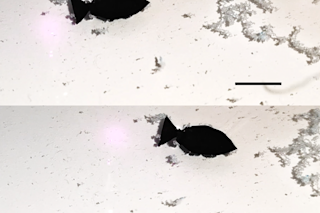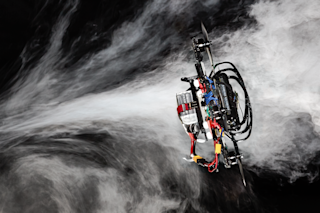Margaret Geller first met the stickman in the fall of 1986. While the exact date has faded from her recollection, she remembers the time as midafternoon and her reaction as a kind of euphoria. No one had ever seen the stickman before--at least, not really. Valérie de Lapparent, who was Geller’s graduate student, noticed it but says she was too inexperienced to understand its implication. John Huchra, who was Geller’s collaborator at the Harvard-Smithsonian Center for Astrophysics (cfa), says he took one look at the stickman and assumed he had botched his observations. It took Geller’s eye to recognize the stickman as something real and important.
Geller, Huchra, and De Lapparent had mapped the nearby universe, taking several months to carefully measure the distance to 1,000 galaxies, some as near as 30 million light-years away, others as far as 650 million. De Lapparent had fed the distance and positions of ...














